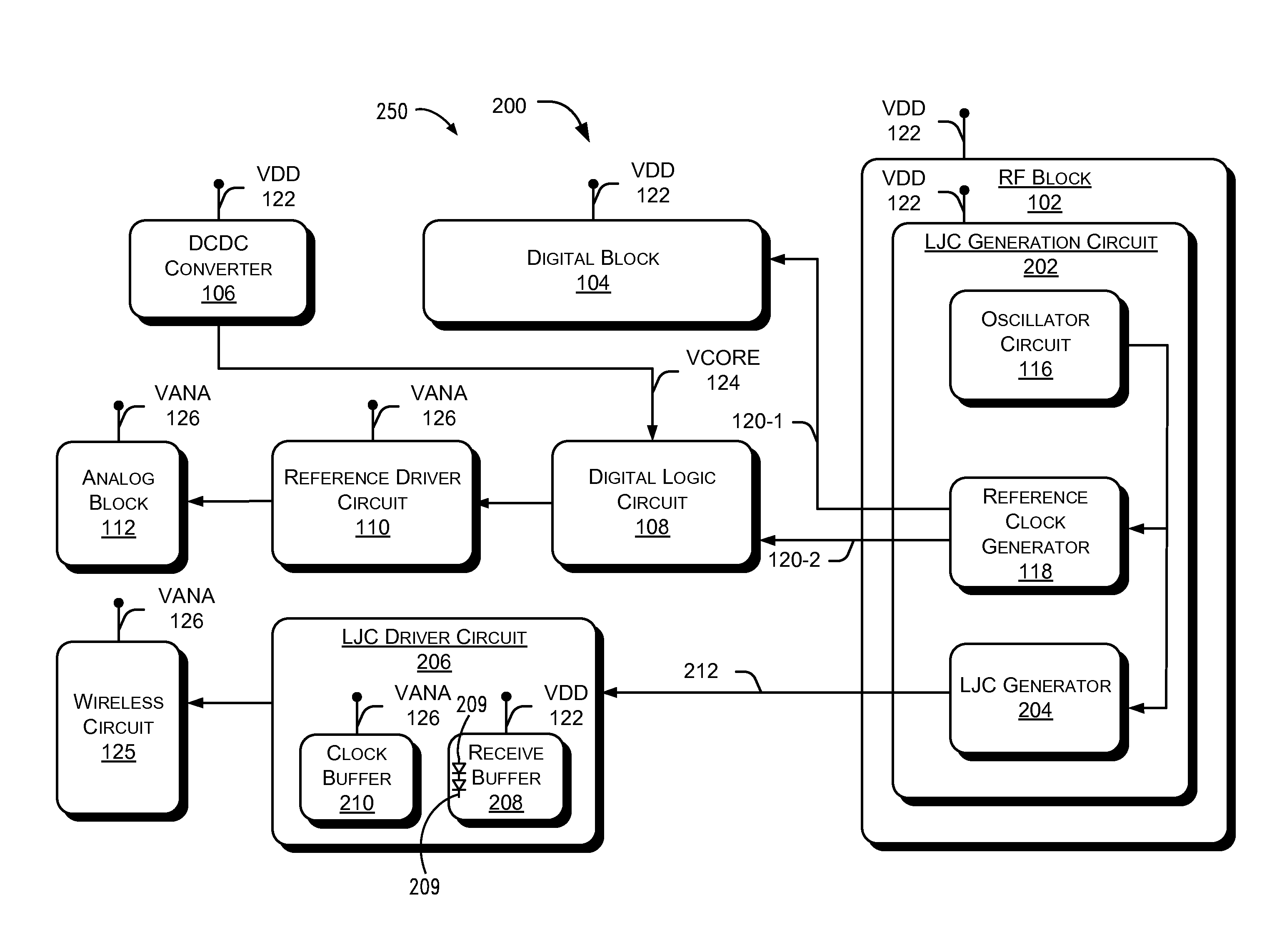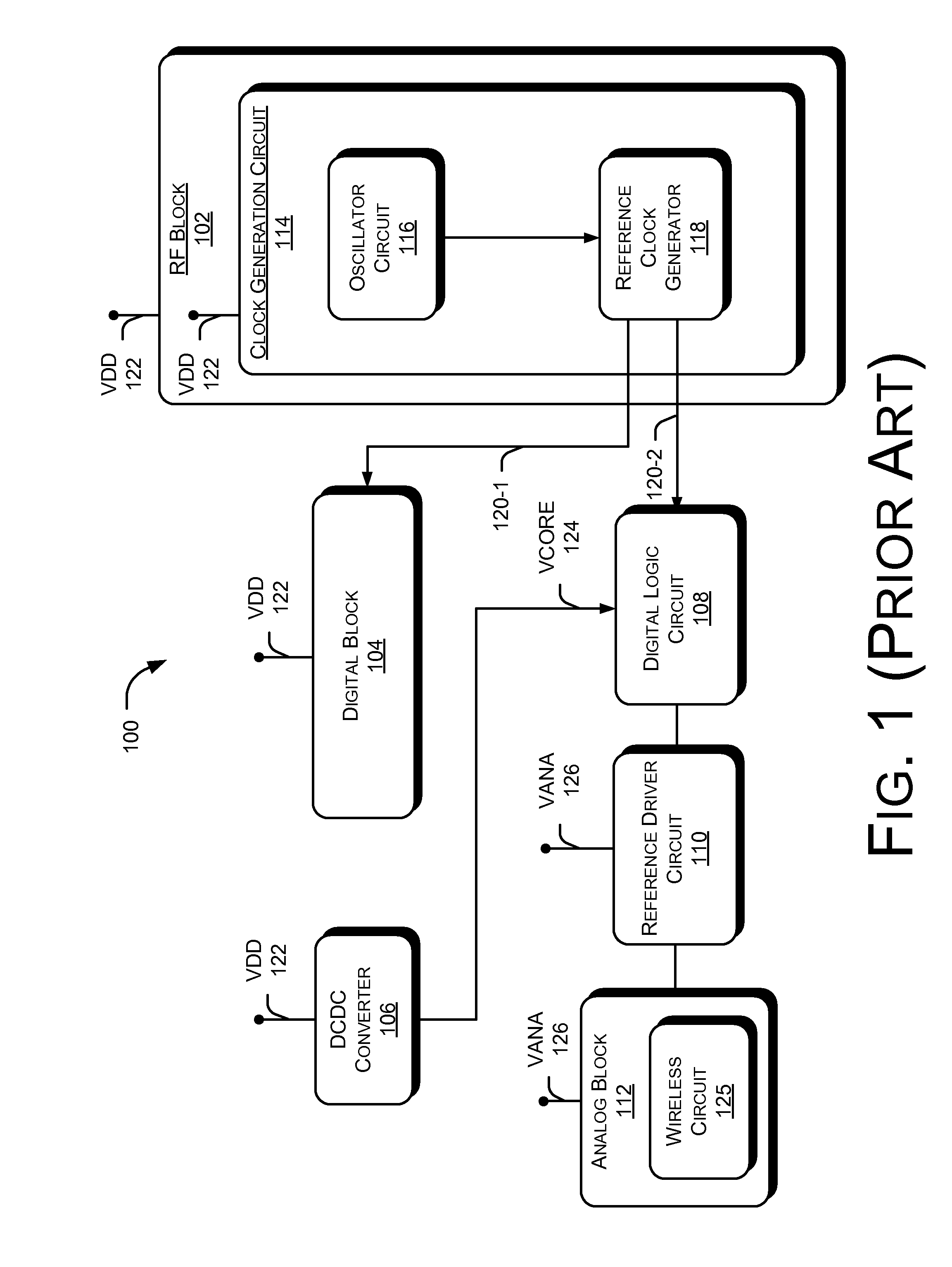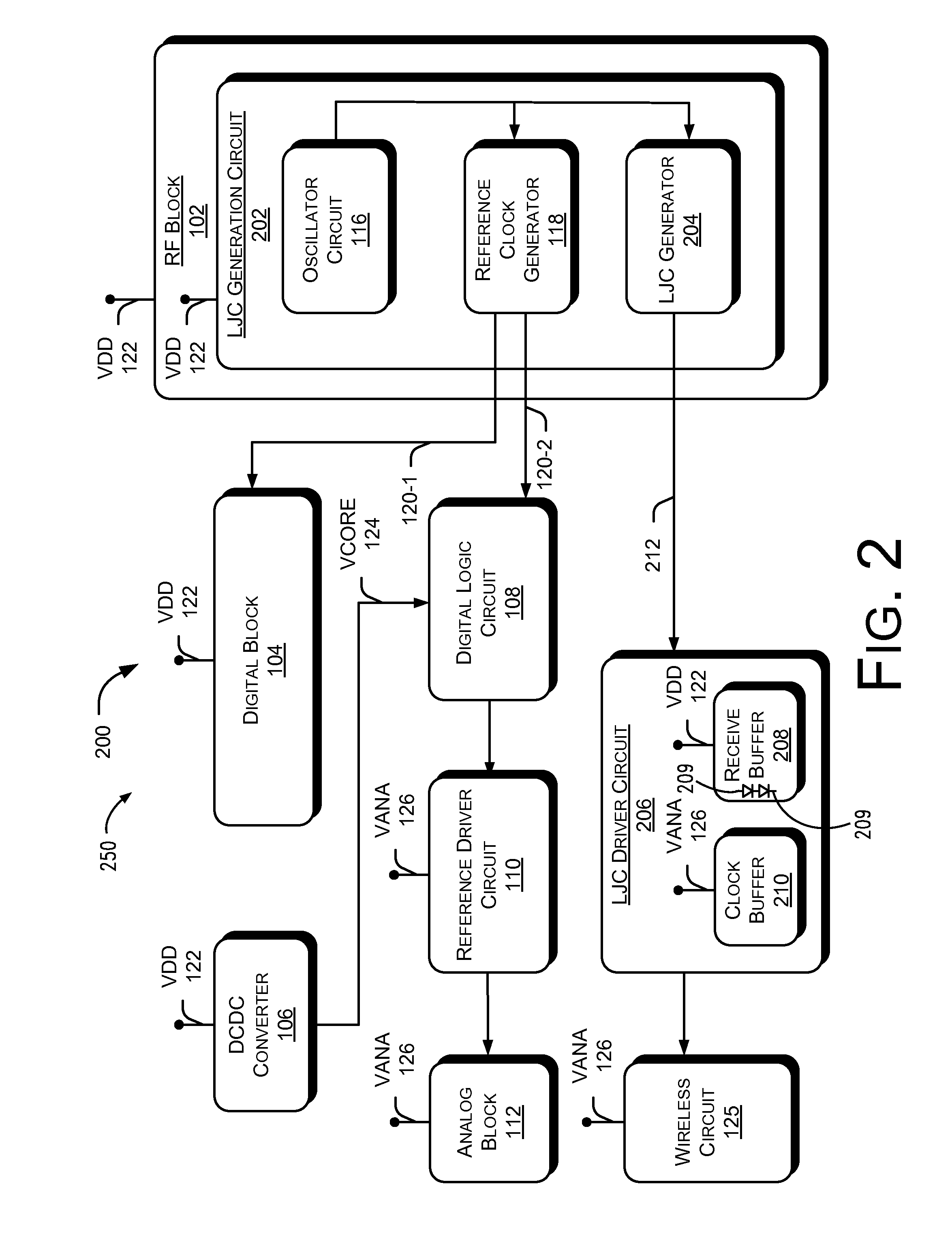Generation of a low jitter clock signal
a clock signal and low jitter technology, applied in the direction of electrical instruments, electric digital data processing, electrical equipment, etc., can solve the problems of affecting the desired rf signal output of the chip, and the distortion of the clock signal, so as to reduce reduce the transition time of the clock signal. , the effect of reducing the common impedance of the conducting path
- Summary
- Abstract
- Description
- Claims
- Application Information
AI Technical Summary
Benefits of technology
Problems solved by technology
Method used
Image
Examples
Embodiment Construction
[0027]The disclosed subject matter relates to a system for generation of low jitter clock signals. More particularly, the subject matter relates to a system for providing a low jitter clock signal for wireless circuits, such as a Bluetooth circuit or a GPS circuit.
[0028]In the following description, numerous specific details are given to provide a thorough understanding of embodiments. The embodiments can be practiced without one or more of the specific details, or with other methods, components, materials, etc. In other instances, well-known structures, materials, or operations, such as, for example, power supplies, are not shown or described in detail to avoid obscuring aspects of the embodiments.
[0029]Reference throughout this specification to “one embodiment” or “an embodiment” means that a particular feature, structure, or characteristic described in connection with the embodiment is included in at least one embodiment. Thus, the appearances of the phrases “in one embodiment”“a...
PUM
 Login to View More
Login to View More Abstract
Description
Claims
Application Information
 Login to View More
Login to View More - R&D
- Intellectual Property
- Life Sciences
- Materials
- Tech Scout
- Unparalleled Data Quality
- Higher Quality Content
- 60% Fewer Hallucinations
Browse by: Latest US Patents, China's latest patents, Technical Efficacy Thesaurus, Application Domain, Technology Topic, Popular Technical Reports.
© 2025 PatSnap. All rights reserved.Legal|Privacy policy|Modern Slavery Act Transparency Statement|Sitemap|About US| Contact US: help@patsnap.com



